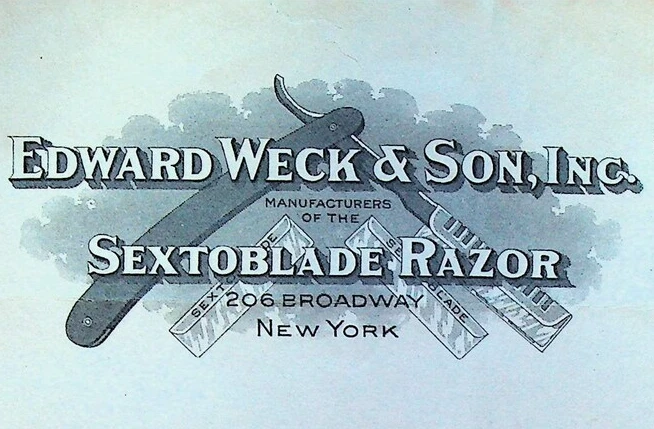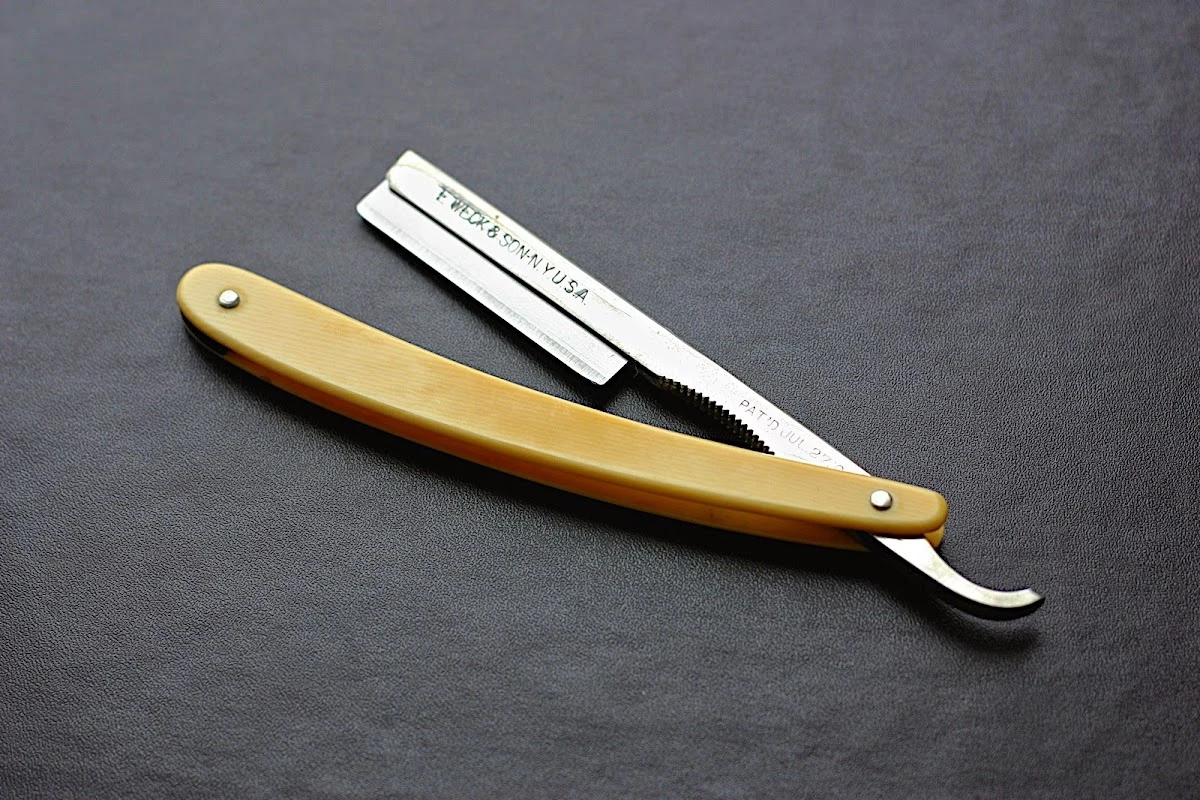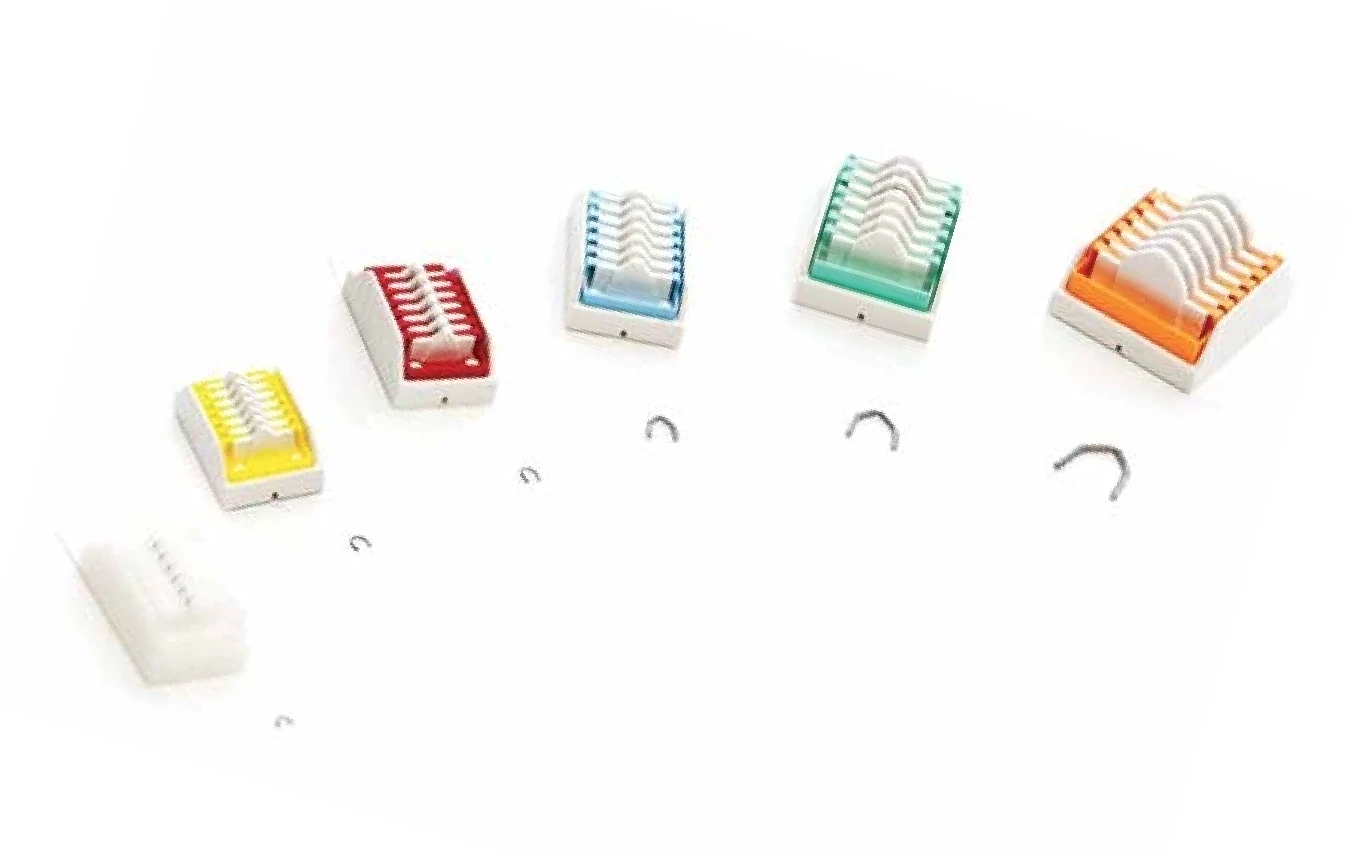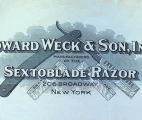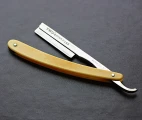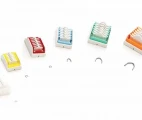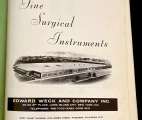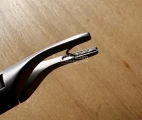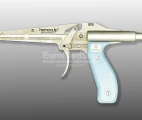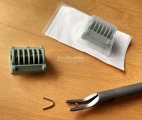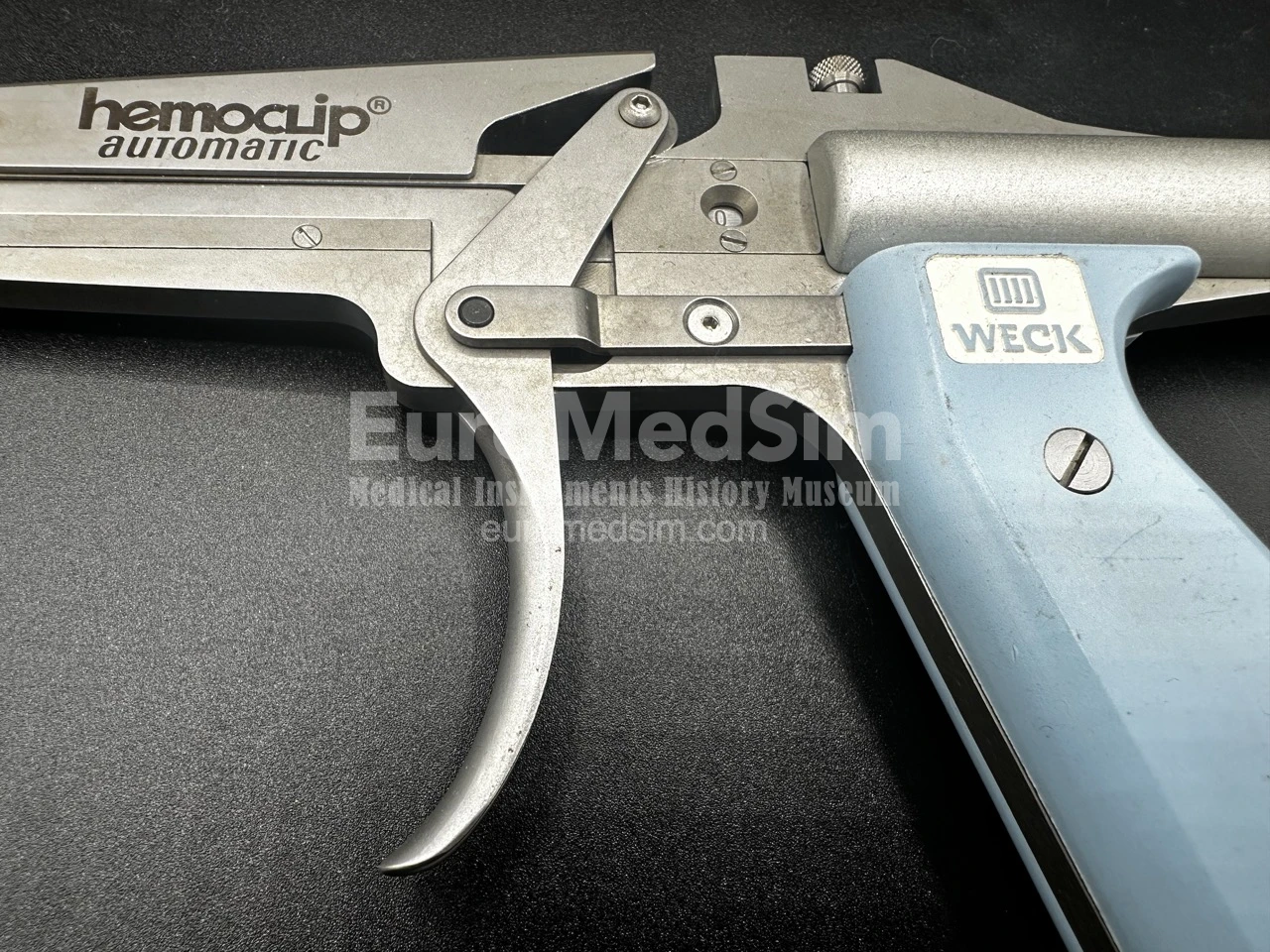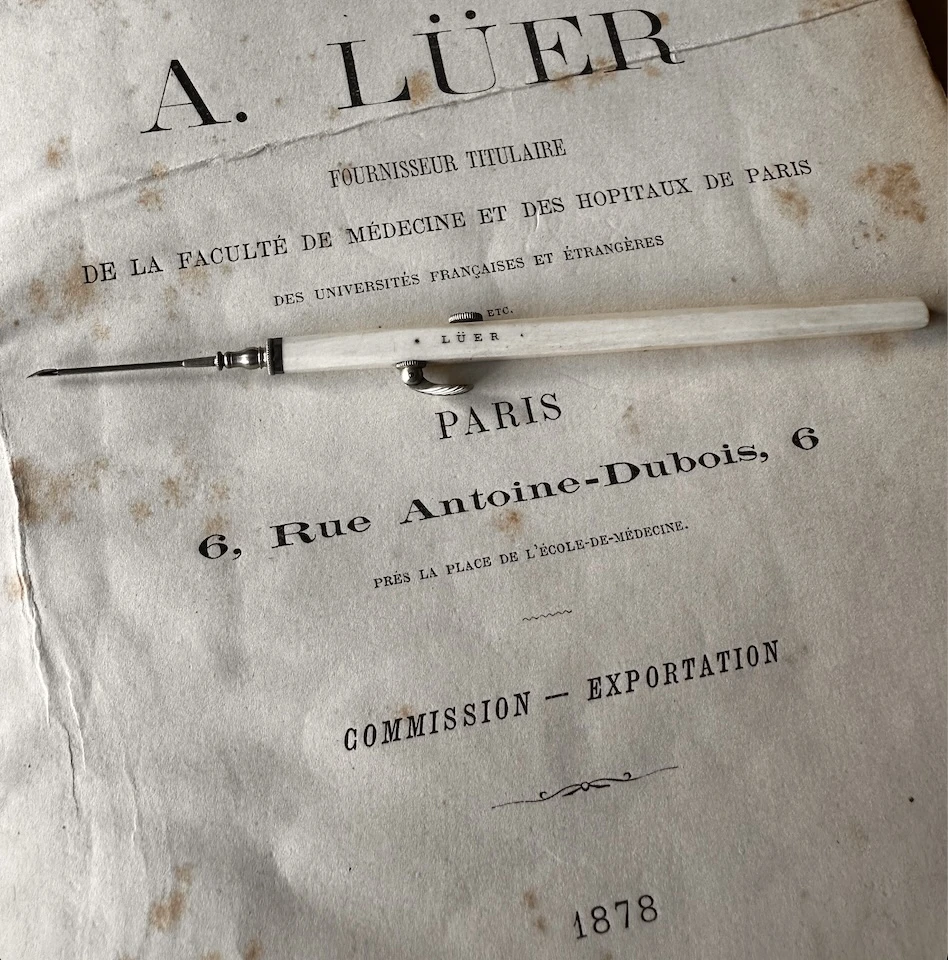Edward Weck & Son
The company Edward Weck Inc. traces its roots to it founder, Edward Weck, a German immigrant from Solingen, a city famed for blade-making. According to the statement on its first catalogues the firm was ‘established 1890' and in 1909 has received its first patents on the interchangeable razor blades. The company gradually moved into surgical field and played a significant role in the advancement of surgical instrumentation, particularly in the fields of microsurgery and vascular surgery. It was known for producing high-quality surgical tools, including vascular clamps and microsurgical instruments, which became standard in operating rooms worldwide. Its innovations contributed to more precise, less invasive surgical procedures, improving patient outcomes. Today, the legacy of Edward Weck endures through integration into larger medical device company, Teleflex, continuing to influence modern surgical practice.
Company's Bestseller — Razor 'Sextoblade'
The 1920s were marked, among other things, by a fashion for clean-shaven faces. Beards were no longer considered acceptable. Millions of men around the world began their mornings by shaving their stubble. In those days, the routine was to endlessly sharpen a razor blade for shaving. They'd get dull really quickly, and customers would stop going to the barber with a blunt razor. Seeking to improve the shaving razor, young cutler made his first genius invention — a razor with interchangeable blades.
Many internet sources claim that in 1909 Weck received a patent for a multi-blade straight razor under the name ‘Sextoblade’ that featured six blades attached at the base that folded into the handle, allowing a user to rotate a fresh blade into position as one dulled. A razor that looks like a Smith & Wesson revolver with bullets in a rotating drum? In fact, “six-in-one … hiding blades in the handle… fresh blade rotation”— none of that nonsense was ever there. In reality, Edward Weсk received his first (but by no means last) patents on July 27, 1909, consecutively numbered 929,058 and 929,059, for the interchangeable blade holder and the blade itself [1, 2]. As stated in the first patent “The handle is of conventional form (sic!) and … mounts the said holder in the handle. The holder is preferably made out of one piece of sheet metal and preferably consists of two parallel sides united by a back.”
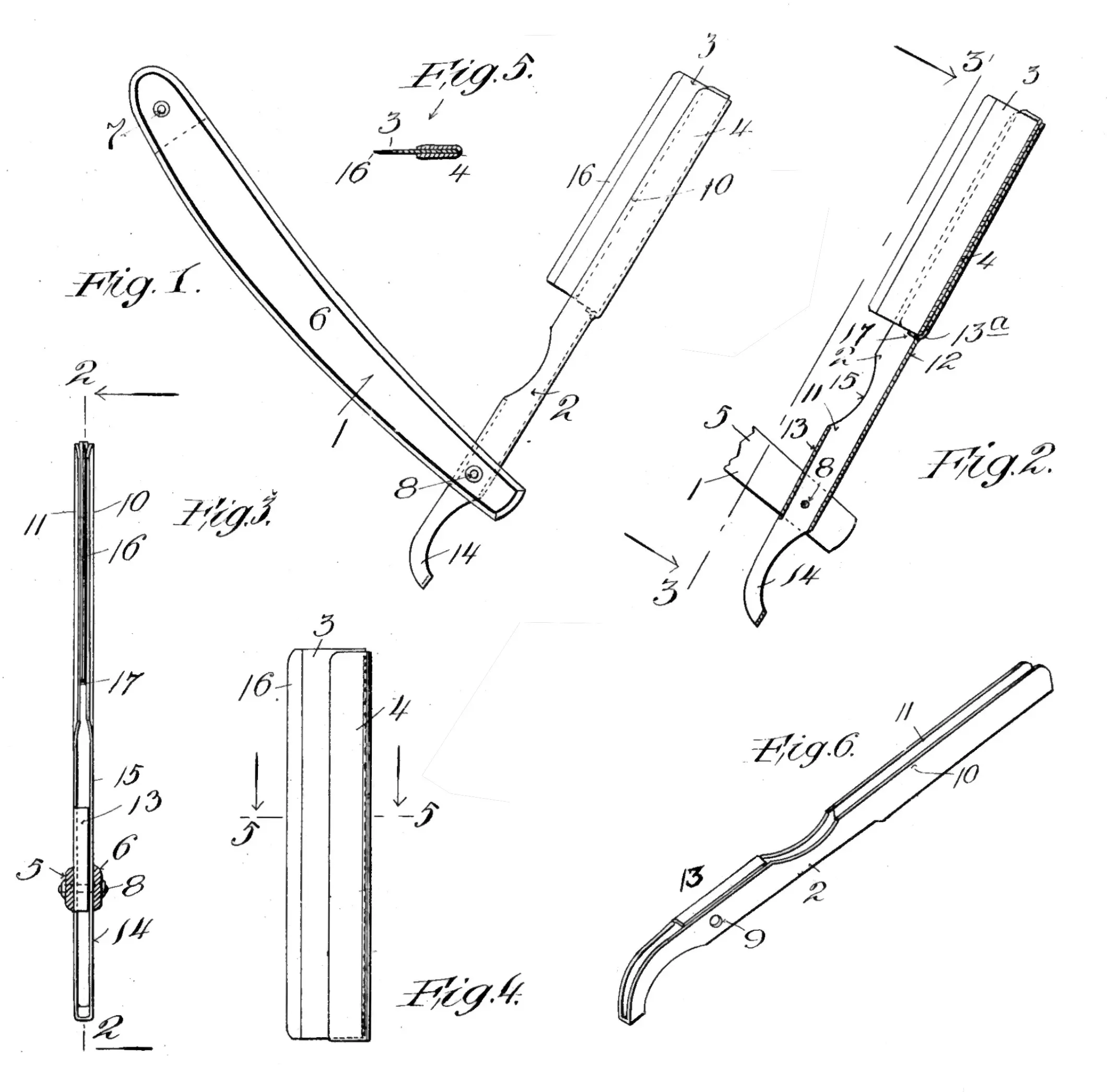
Patent US 929058 submitted by Edward Weck
This factual clarification in no way detracts from the merits and significance of this invention. Later the inventor gave his razor the trade name ‘Sextoblade’ (if for today's reader this name sounds, let's say, strange or even indecent, then for our classically educated ancestors the word “sexto” could mean only one thing - “sixth” in Latin). Being not only a gifted engineer, but also an excellent marketer, Weck sold his razor immediately with a set of spare blades for an entire week — one blade was already located in the razor, and next to it in the etui were five spare blades for the rest of the week excluding shaving-free Sunday (aha, here is the explanation of the word “six” in the trademark Sextoblade). Having bought such a set, a man could enjoy a great shave every day, each time using a fresh razor. Always the best!
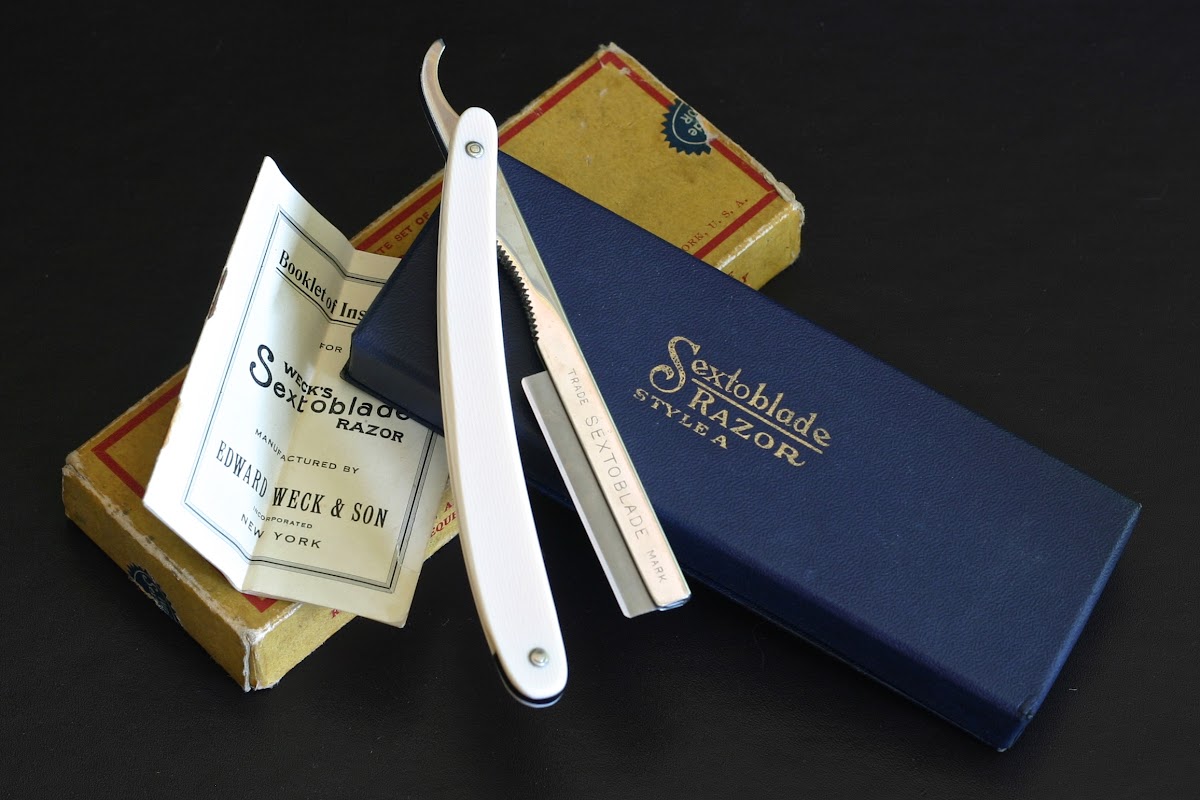
Razor Sextoblade by Edward Weck and Sons, Source: ATGShaving
Weck’s shaving business prospered, and he expanded operations to Brooklyn. In 1909, he established a manufacturing facility in downtown Brooklyn at 135 Johnson Street, which became the company’s early headquarters and factory (The Johnson Street factory was a seven-story building situated between Bridge and Duffield Streets; an area later redeveloped for the Metrotech/NYU Polytechnic campus [3].) By the 1910s, Edward Weck’s razors – including variants like the Weck 'Orderly' (a model marketed to the U.S. Navy Medical Corps) and the pocket-sized 'Bantam' – had gained a strong reputation in both civilian and military markets. In 1917, Edward formally incorporated the business as Edward Weck & Son, bringing his son Albert Weck into the company.
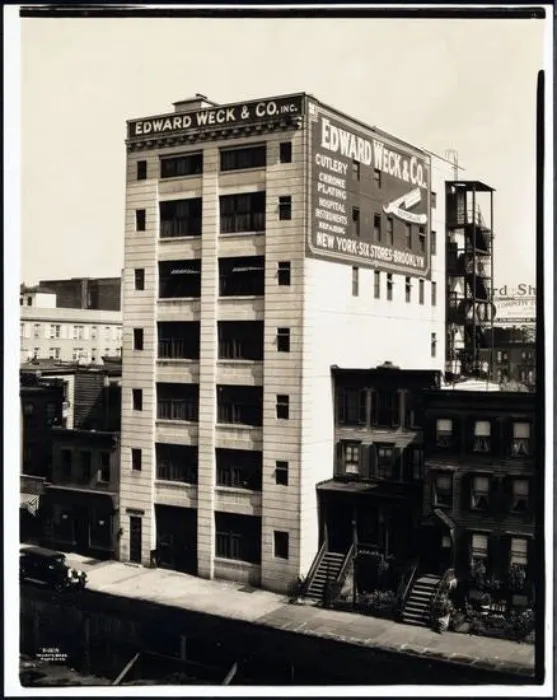
The Edward Weck factory building in downtown Brooklyn, located at 135 Johnson Street. The Photo dated 1931, from the Museum of the City of New York. Source: brownstoner.com
Transition into Surgical Instruments (1920s–1950s)
After Edward Weck’s death in 1922, Albert Weck took over and broadened the company’s focus beyond shaving products. Leveraging the firm’s expertise in fine blades and tools, Albert expanded into surgical and medical instruments. By the 1920s–30s, Edward Weck & Son was manufacturing an array of surgical instruments and hospital supplies, while still producing hair shaper razors and surgical prep razors (the latter marketed to military medical units for field surgery prep[aration]). Photographs from 1931 document a busy Weck factory floor in Brooklyn, with workers crafting surgical tools [3]. Throughout the 1930s and 1940s despite the Depression era, the company continued to grow, frequently advertising for factory workers, indicating steady demand.

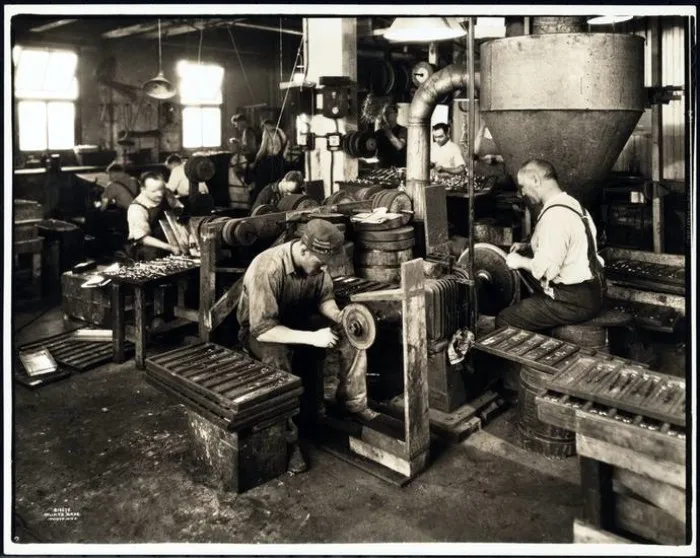
The manufacturing processes at the Edward Weck factory in downtown Brooklyn. The Photo dated 1931, from the Museum of the City of New York. Source: brownstoner.com
In 1953, after roughly four decades in downtown Brooklyn, Weck & Son relocated manufacturing out of Brooklyn in search of cheaper industrial space. The company moved its headquarters and factory to Long Island City, Queens in 1953. The new address was 49-33, 31st Place, Long Island City, NY 11101, which would remain Weck’s base for the next few decades [3]. This move was part of a broader mid-century trend of NYC manufacturers shifting to outer boroughs or suburbs for larger facilities and lower costs. Despite the change in location, the company name and operations stayed the same – continuing to produce surgical instruments and specialized razors.
A major corporate change occurred in the late 1950s: sometime between 1956 and 1963, Edward Weck & Co. was acquired by the Standard International Corporation of Massachusetts [3]. 'Standard International' retained the Weck brand and likely provided capital for further growth. Under Standard’s ownership, Weck made a pivotal expansion of its product line in the early 1960s that would cement its reputation in surgical devices.
In 1963, Weck redefined the closure market with the introduction of the Hemoclip® Traditional Metal Ligating Clip System, which made surgeons much more confident when dealing with bleeding blood vessels. Continuing to refine the idea of using clips and staples in surgery, the company developed polymer hemostatic clips that were eventually broken down enzymatically in the body, skin clips for mechanical closure of surgical wounds, and clips with latches that could be applied temporarily and then removed as needed.
Further tributes to the memory of the company's founder were inventions related to cartridges for convenient loading of clips, as well as their automated feeding into the clip applicator, such as the Hemoclip Automatic. Although Weck and its engineers were not the first to invent hemostatic clips, the convenience and reliability of their products have contributed greatly to their widespread use. In total, Google Patents contains 95 patents registered to Edward Weck Inc.
These include biopsy capsules, surgical masks, plastic cutter tip molds, surgical clip applicators (1972 – Endoscopic!), Skin clip remover and Surgical skin suture stapler (yes, yes, exactly those you know very well from your surgical residency since the 80s and later!).
Key Products and Innovations of Edward Weck
Edward Weck Inc. introduced and developed numerous medical products over its history. Below is a list of key products and systems, with a focus on the surgical ligation clips and appliers for which Weck became best known:
Weck 'Sextoblade' Razor (1909) – A straight razor for barbers and medical use. Patented by Edward Weck in 1909, its design allowed extended use by providing multiple edges that slided into the working position, offering instantly brand-new blade, reducing the need for frequent sharpening. This innovative razor (and its later variants like the Prep and the Bantam) established the company’s early success in cutlery and grooming tools and opened access to the military medical market.
Hemoclip® Metal Ligating Clips and Appliers (1963) – In 1963 the company made a defining pivot to surgical closure technology with the introduction of the Weck Hemoclip ligating clip [5]. A Hemoclip is a small U-shaped metal hemostatic clip used to clamp blood vessels or ducts during surgery. The earliest Hemoclips were loaded by a friction-fit mechanism. The introduction of Hemoclip “redefined the closure market” [5].
Ligation Clip Cartridges and 'Plus' Systems (1980s) – A 1980 patent (U.S. Patent 4,344,531) was granted to Edward Weck & Co. for a “hemostatic clip cartridge” [6]. Weck introduced the Hemoclip® Plus line, which enabled faster, sequential application of metal clips.
Plastic (Polymer) Ligating Clips (late 1980s) – Patents filed in the late 1980s for polymer (plastic) ligating clips that lock securely onto vessels [7]. This technology laid the groundwork for the later Hem-o-lok® Polymer Locking Clip system widely used today [5].
Surgical Skin Staplers and Skin Closure Devices (1970s–1980s) – Weck obtained patents for surgical staplers, skin clip appliers, and corresponding removal tools. These included devices like a multi-feed surgical stapler (U.S. Patent 4,807,628) [8] and a skin clip applier patented in 1983.
Mergers, Acquisitions, and Corporate Transitions
- Standard International (ca. 1950s–60s): Acquired Edward Weck & Co. and enabled further expansion, including the 1963 acquisition of the Durham-Enders Razor Company.
- E.R. Squibb & Sons (1971): Purchased Edward Weck & Co. from Standard International for $22 million. Weck became part of Squibb’s medical products division.
- Bristol-Myers merger (1989): Squibb merged with Bristol-Myers to form Bristol-Myers Squibb (BMS). By 1993, Edward Weck Inc. operated from Durham, North Carolina, employing about 350 people.
- Teleflex Inc. (1993): Acquired Edward Weck Inc. from BMS for $63.5 million. Under Teleflex, the Weck brand became a cornerstone of their surgical ligation product line, including the continued development of Hemoclip and Hem-o-lok systems.
References
- U.S. Patent No 929,058 — “Razor”, issued July 27, 1909. patents.google.com/patent/US929058A
- U.S. Patent No 929,059 — “Razor Blade”, issued July 27, 1909. patents.google.com/patent/US929059A
- Brownstoner: “On the Razor’s Edge – Edward Weck & Company”. brownstoner.com/history/walkabout-on-the-razors-edge-edward-weck-company
- Weck razors – from Sextoblade and US Navy Medial Corps kit, the Weck Orderly to Weck Prep medical razors: atgshaving.com/threads/weck-1909-on.17431
- Teleflex Medical – Weck Ligation Solutions (current product line overview): teleflex.com/usa/en/product-areas/surgical/ligation-solutions/weck-metal-ligation
- U.S. Patent No. 4,344,531 – “Hemostatic Clip Cartridge”, issued August 17, 1982. patents.google.com/patent/US4344531A
- U.S. Patent No. 4,834,096 – “Surgical Ligating Clip”, issued May 30, 1989. patents.google.com/patent/US4834096A
- U.S. Patent No. 4,807,628 – “Multiple Feed Surgical Stapler”, issued February 28, 1989. patents.google.com/patent/US4807628A
Addresses of Edward Weck
Dec. 14, 1926: at the 206 Broadway, New York
Weck Building, 135 Johnson Street, Brooklyn, New York
1953: The new address was 49-33, 31st Place, Long Island City, NY 11101
803 N. Front St., Suite 3, McHenry, IL 60050 (this address was provided in the FDA application in 1981).
2013: Teleflex Medical PO Box 12600 Research Triangle Park, NC 27709 Toll Free: 866.246.6990 Phone: 919.544.8000 Intl: 919.433.8088 Teleflex.com
